There are some really fun family science ideas to try at home on the Royal Institution ExpeRimental website. Find it here.
Rufus and the racers is one of my favourites. Which is yours?!

There are some really fun family science ideas to try at home on the Royal Institution ExpeRimental website. Find it here.
Rufus and the racers is one of my favourites. Which is yours?!

The pupils and staff at Wimbledon High take an active role in increasing sustainable travel, reducing congestion and improving air quality around Wimbledon High School. As part of this we hold the TfL STARS Travel Plan at Gold level and take part in numerous activities such as walk to school week and an anti-idling campaign.
We were therefore very keen to take part in the #UCLChemAirPoll project where a team of chemistry undergraduates from UCL visit year 5 to carry out an air quality investigation together. We wanted to find out about the air quality around our school and more about the seriousness of this issue. The UCL students visited us to talk to the year 5 pupils about air pollution, where it comes from and the problems that it can cause. The pupils then decided where they thought we should take air pollution readings and our wonderful team of chemistry undergraduates put up a series of diffusion tubes in the locations the pupils chose. The diffusion tubes will be analysed by the UCL team after a month of being in place to give us an idea of the levels of nitrogen dioxide around our school. We will then be able to discuss with the UCL team the implications of our results and actions that we can all take to reduce air pollution in our area.
While we await the results, year 5 have been thinking about ways we can find out more to give us a really full picture of air quality in our area. If you would like to help gather data please do be on the look out for sycamore leaves and send us your results! More information about the UCL project can be found here and more information about OPAL’s air quality survey can be found can be found here.




Janvi, (Year 13) explains what her role as Charities and Partnerships Rep involves and explores her plans for the year. In our busy daily lives, why is it important to make connections to the wider world?
I think it is reasonable to say that the average WHS girl leads a fairly busy life. With countless deadlines and extra-curricular commitments, sometimes it seems impossible to find time for yourself, let alone for others! As Charities and Partnerships Rep, one of my main duties is to remind students of the importance of giving time to charity and helping those in need. I truly believe the core characteristics lying at the heart of every WHS girl are empathy and kindness, and my aim is to motivate pupils throughout the school to use these values to help make a significant impact on the lives of people around us.
Another important aspect of my role is organising and running various charity events such as the Autumn Charity Fair which took place last week. It was heart-warming to see students of all ages working together to raise money for various causes, led by our newly elected year-group charity reps.
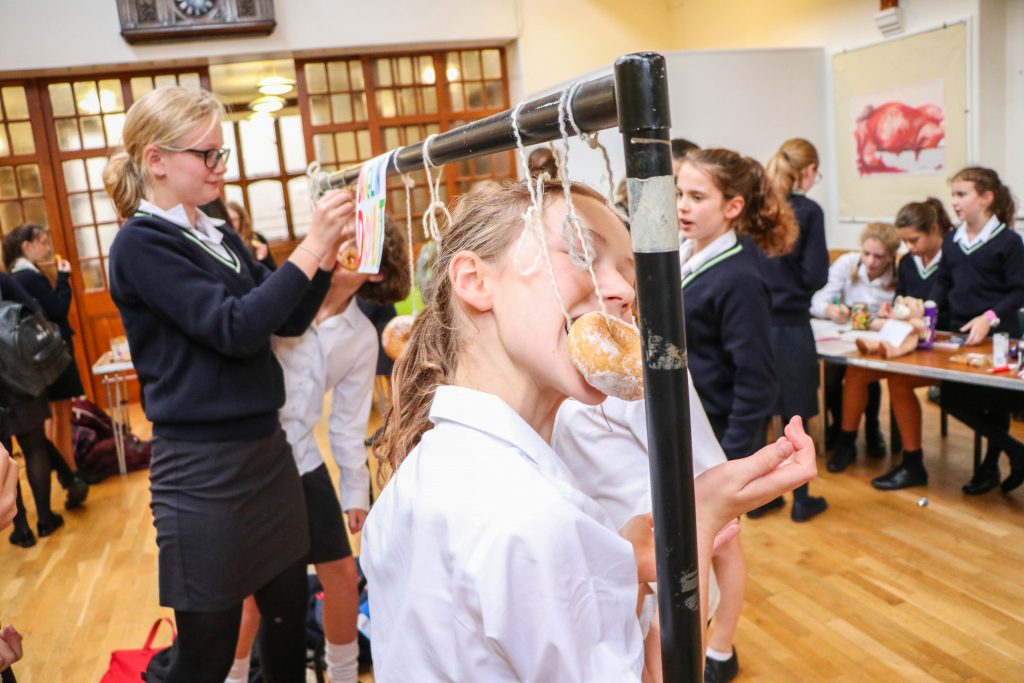
My aims for this academic year fall under three categories:
Bringing awareness to the work which a charity does is very important as it encourages more people to get involved and fundraise as well as bringing to light different issues faced by people across the world. For this reason, I plan to start a termly newsletter detailing the work done by our chosen year-group charities and the charity events that have been taking place.
As I have mentioned, giving time to charity is often neglected due to our busy lives, so with the help of our year-group charity reps, I would like to encourage people to take time out of their week to help others.
Fundraising is crucial as charities need money to provide the people they help with specific resources and services. Therefore, the goal for each year group this year is to raise £300 per term towards their chosen charity.
Our pastoral theme for this year is “Connections”, which is an idea that links very closely to charity and partnerships. When it comes to charity work, there is often a heavy focus on fundraising. Whilst giving money to charity is undoubtedly important, the power of connecting with individuals on a personal level is astounding and often underestimated. Every week during our Enrichment session at Kew House Care Home, I find myself astonished at the impact our visit has on the elderly residents. Seeing their faces light up as we chat to them and play games with them is a powerful reminder of the difference that can be made to a person’s life by simply giving your time and energy without expecting anything in return. To us, it is simply an hour out of our day every week, whilst to them we are making a significant improvement to their day.
Spending time with people in our community and making connections with them is also incredibly rewarding. Not only does it bring happiness and a sense of fulfilment and purpose, but it constantly challenges us to see the world from somebody else’s perspective and reminds us to be grateful for what we have. In our day-to-day life it is very easy to forget how lucky we are and the privilege we hold, but charity work enables us to put our problems into perspective which is crucial to living a fulfilling life.
For these reasons, my main goal this year is to encourage students to make connections, whether it be locally or globally, because giving a tiny fraction of your time to support a person who is in desperate need of help can truly make a significant improvement to their life.
Jenny Cox, Director of Co-curricular and Partnerships at WHS looks at Wimbledon’s partnership work and whether it is a positive programme for the school and its community to be part of.
Partnerships work takes on many different forms at WHS. We are very proud of the work the Year 11, 12, 13 students take part in during partnerships afternoon, in addition to the wonderful SHINE programme, initiatives such as Merton against Trafficking and of course our charity work.
As a charity, building meaningful and positive relationships with the local, national and international community is central to the aims of the school. Whether it be leading, teaching, mentoring students at local state primary and secondary schools or entertaining, befriending, gardening as part of ‘WHS in the Community’ programme, they are all are wonderful examples of the work that takes place on a weekly basis.
Currently there twenty-one separate programmes taking place on a Thursday afternoon alone; nine in the community, six at secondary schools and five at primary schools and all of which are supported so wholeheartedly by the Wimbledon staff. The range of programmes is diverse; from our Year 3 girls going to local residential homes with WHS Year 11 & 12’s to read to the elderly, to helping with the gardening as part of our ‘Helping Hands’ project at Wimbledon Guild and of course our Entertainment in the Community group going ‘on tour’ around Merton to perform at residential, care homes and hospitals.
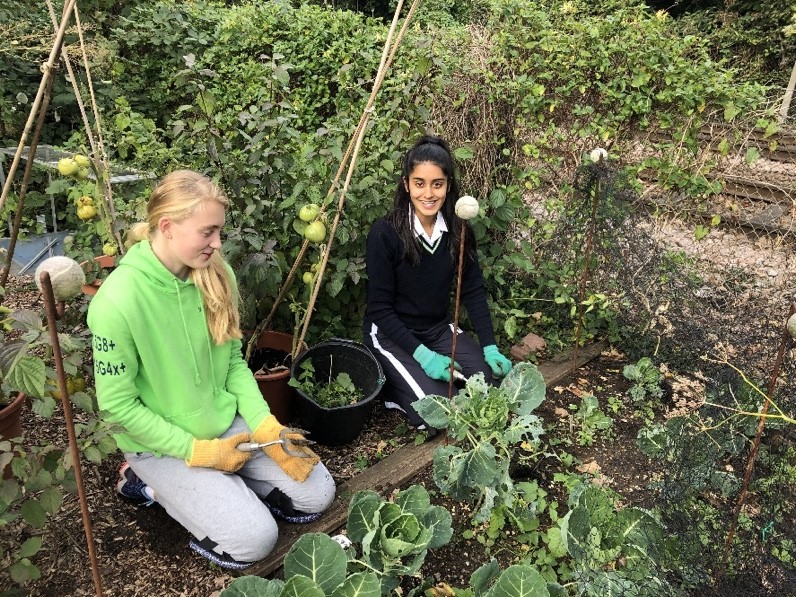
These programmes have bought delight to the elderly who look forward to the Wimbledon High School visits and well as our own girls:
“Week 2 into the programme – Lucy (106!) never takes part in activities organised by the care home but today she got out of her flat to spend time with the girls because she enjoyed last Thursday. It’s the most exciting time of her week”
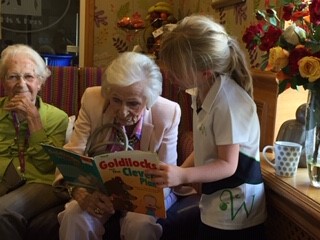
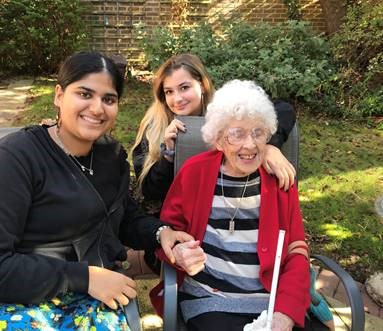
Our partnerships with state schools has seen the launch this year of the ‘Clever Clogs’ programme for West Wimbledon, Wimbledon Park, Green Wrythe and St Andrews and St Marks school, for high achieving boys and girls in Year 5. These students are academically stretched by WHS staff and mentored for 16 weeks by WHS students. In their working books, the weekly question, “what have I learnt today” we have seen responses such as……
“I learnt how to code a magic 8 bit and how to write a chart”
“I have learnt what an algorithm is”
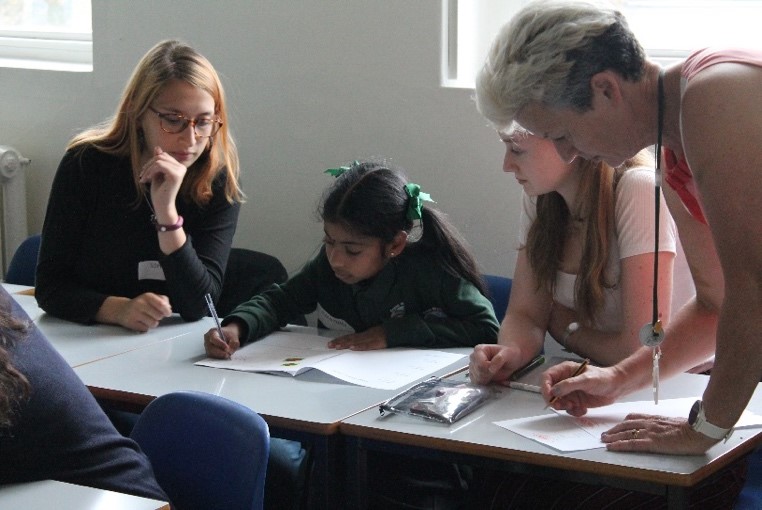
The ‘Teach Together’ programmes continue to be an important component of the Thursday afternoon activities. These are bespoke programmes for a variety of ages which involve WHS students facilitating the delivery of subjects such as Maths, Physics, Music, Latin, French, Netball and mentoring sessions to a range of partner primary and secondary schools. There is a high degree of collaboration between school staff and students, which brings me back to the initial question: ‘Are Partnerships with local schools and the community beneficial? If so, for who?’
There is absolutely no doubt in my mind that all of our partnership work is mutually beneficial. Current funding in state schools has triggered the decline of subjects such as Music, and very few state schools have subjects such as Latin on their curriculum or the facilities to deliver really creative and inspiring science lessons. Many independent schools are fortunate to be in a position to work alongside these schools to provide staff and students to help ensure subjects like these are still taught. I say fortunate as the benefits of working with others on our own mental health and well-being really does exist.
This may surprise you, however, putting people’s needs before our own can reduce stress, improve mood, self-esteem and happiness. It probably doesn’t feel like that when deadlines are looming, but voluntary work promotes positive changes in the brain associated with happiness which in turn gives us a period of calm and eventually well-being. Talking to someone on a regular basis can bring with it a sense of belonging and talking to someone like Lucy (in the picture above) may give a different perspective – she must have some extremely wise words for us all! It’s that sense of perspective particularly when working with those who may not have the same level of resource which is grounding, and can help us all achieve a more positive outlook. Kindness is contagious. Just one smile, high five or piece of positive feedback to anyone at any age can lift a mood and spark optimism and hope.
Further reading:
www.ox.ac.uk/research/why-doing-good-can-do-you-good
This weekend Kipchoge ran a marathon in less than two hours, making history with a time of 1:59:40! It is the fastest any human has ever covered the 26.2 miles marathon.
What I find inspirational about Kipchoge is that he often compares his goals and what seems “impossible” similar to reaching the moon, and other various stars in our galaxy. I find this a really inspirational thought to consider, we once thought landing on the moon was impossible… until it was done. He set his goals right up there with the stars and I think we should do the same, nothing is impossible unless you think it is.
Also he recognises and goes on to thank his team around him, from the pacemakers, to the experts on aerodynamics, cyclists delivering him drink, his unreleased Nike shoes, to the driver of the car projecting lasers to show him the pace – they all played a part in getting him to his dream – the “moon”. Reading the article on Saturday reminded me of something someone once told me, that everyone has a team behind them, and yes the parts of the team get swapped out, but that individual wouldn’t be where they were without their team. I think it’s really important to be able to take a minute and recognise this because in our busy lives, always chasing success it is easy to forget how you got to where you are.
Good luck this week with your matches, it’s the last push until a well-deserved rest in half-term!
Written by: Emily – Sports + Netball Captain
Claire Boyd, Head of Junior School, reflects upon the emotional response pupils, teachers and parents may experience as artificial intelligence, big data and augmented reality looks sets to change the educational landscape.
It seems to me that we can be in no doubt that the educational zeitgeist of the moment is the potential that artificial intelligence, big data and augmented reality holds for education. As Ben Turner, Assistant Head Pastoral, explored on the pages of this blog last month, the take-home message from the keynote speakers at September’s Grow 2.0 conference, was the unprecedented scope of new technologies to create a bespoke, tailored learning experience for individual learners.
The same sentiments were echoed by Priya Lakhani, CEO and founder of Century Tech, on stage at the annual conference of the Independent Association of Prep Schools in central London a fortnight ago. Patel evangelised on the capacity AI holds to democratise education and remove silos of learning from classrooms around the world.
Much closer to home, my path across the playground from the Junior School to Senior School each day serves as a compelling reminder of the exciting and progressive space Wimbledon High School is giving to pursue a new, non-binary approach to teaching the disciplines of science, technology, engineering, art and maths; creating space for new approaches of innovation and collaboration to flourish through Project Ex Humilibus. The cumulative effect of these realities cast a different landscape of education with which many parents and teachers in our school community will identify. Whilst recognition that the traditional ‘factory’ model of education, in which knowledge and skills are played off against one another as learners are spoon-fed a linear curriculum of discrete subject teaching, is outmoded and anachronistic, there is little clarity on the reality of what an AI, data-led education system will offer is not yet certain.
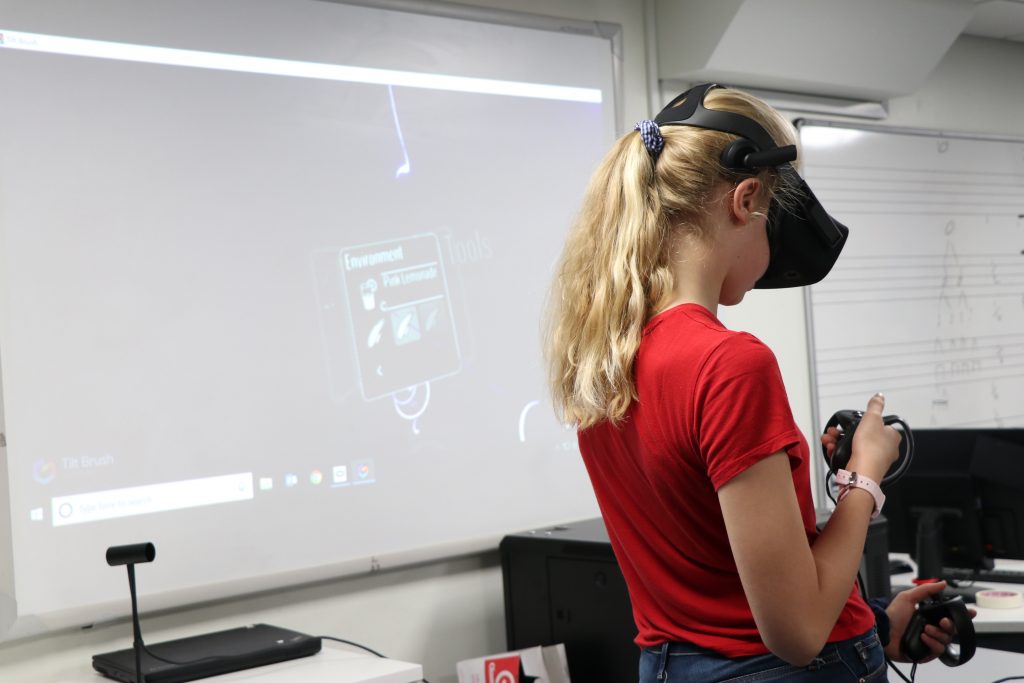
With wearable technologies and virtual home devices such as Google Home and Alexa becoming increasingly commonplace in households around the country as well as ‘customers who bought this also liked’ recommendations par for course of our online shopping experiences, the creeping pervasiveness of data driven AI devices is changing the face of many of our everyday transactional experiences beyond recognition. Heralded for the part these developments play in increasing convenience and expediting smart-living, the contribution these new products are making to modern life is widely celebrated across mainstream society. When the capacity and functionality of these data-driven technologies are applied to the educational realm, I wonder how closely the positive reception will be matched? How comfortable are we with the diagnostic skills of AI-driven learning technologies being applied to the classroom environment, taking up residence in the learning space traditionally driven by the expertise of the teacher as the professional?
Throughout history, schools, universities and other educational institutions have provided space for progressive ideas to germinate and new approaches to intellectual and emotional development to evolve. With this in mind, can it not be that the advantages afforded to us in our personal lives by big data and AI can be replicated in the spheres of learning and education? The potential for AI to collect, collate and analyse the data of individual learning profiles and build personalised learning pathways of attainment, progress and development is so large in scale that the possibilities for bespoke education is infinite.
The advent of AI in education should also not be feared because of what it represents for teachers and the teaching profession more widely. Instead of viewing this new frontier with apprehension or scepticism, we should, as school communities, feel excited and energised about what lies ahead. This is because, when most people are asked to consider the favourite teacher of their school days, their responses will most commonly focus upon the way that teacher made that individual feel; the way the believed in them and empowered them to achieve an ambition or succeed at something they would not otherwise have achieved. It is this capacity for relationship creation, based on the nuances of emotional intelligence and the domain of human-specific skills such as meta-cognition and social intelligence that human and the artificial hold the potential to equip the children of today with the springboard for the unfettered success in the future. In the words of UCL’s Prof Rose Luckin, the “holy grail for education in the future is accurately perceived self-efficacy”.
Flora (Year 13), Environment Rep, expands on the responsibilities she has at WHS, and what we as a school community are trying to do in the fight against climate change.
Now, more than ever, the climate emergency has been brought to our attention, mainly thanks to the incredible Greta Thunberg. The 16-year-old activist has brought on climate strikes all over the world, and recently talked at the UN Environmental Summit, speaking passionately and emotionally about the lack of action regarding climate change. When hearing her speak in this way it is always a wakeup call which helps us to evaluate what we can do to help the environment.

As Environment Rep I have been working with different people, all of whom are passionate about the environment, investigating what WHS can do in our collective fight against climate change. We have identified several areas which we can focus on, including the reducing the amount of single-use plastic in the canteen (in the form of take-away boxes) and reducing the amount of paper we use every day – something which is increasingly happening as we move to digital working practices. It is easy in our everyday lives to forget about such simple and seemingly minor things, but we must be far more aware that our actions do have consequences. When we say, “It’s only one toothbrush” it is almost too easy to forget that almost 7 billion people across the planet will be saying that exact same thing.
When the Student Leadership Team sat down together in the first term after Easter, one thing we thought was important was to emphasise to all our peers that being conscious of the environment is something that we should be doing all throughout the year. It is for this reason that we have decided not to have a week or day celebrating just this, but to make this a regular feature throughout this academic year. It was great to have a Friday Jammin’ a few weeks back focused on raising our voices to help make a change, with the school community singing songs about climate change to help raise awareness and make a change.
Regarding more specific objectives we have for this year, there are a number of areas that I hope we can focus on. These will help us to make small changes to have a big impact on the environment as a whole community

We are all guilty of using single-use plastics in our busy, day-to-day lives. Single-use plastics have detrimental effects on the planet, with a significant amount of it being made from fossil fuels. Two-thirds of all plastic ever made (8.2 billion metric tonnes in 2015) has been disposed of into the environment and is still there; it takes hundreds of years to decompose. Knowing this, we have been trying to reduce the single-use plastic in our canteen, which comes in the form of plastic bottles and other packaged goods, and our end goal is for it to be eliminated completely. While this would be a big step for the school’s fight to reduce its impact, it is also important for individual habits to change. If everyone brought in reusable water bottles, and single-use bottles were to become taboo, that would be a huge step in the right direction. You can also help by using a reusable container for your lunch if you wish to take your lunch away from the canteen.
We have some exciting news coming up! We will be holding a school-wide environment summit for all students, staff and parents. Before this, all the environment reps will be meeting to discuss the agenda for this summit, coming up with a list of points to discuss with the school. At the summit, we shall hopefully draw up a list of criteria that we, as a school, want to implement and stick to. If this all goes to plan, something that we would love to do would be to host a GDST wide summit, so we can share these criteria with many other schools.
We clearly have a very busy year ahead of us, and I hope everyone is as excited about it as I am. I am very honoured to be your environment rep this year, especially in such an important time in regards to environmental awareness. All of these ideas I have mentioned will hopefully have a big impact to our community this year; however, the most significant way to make a change is to be aware of your personal responsibility for the environment, and what you can do to make small changes in your normal routines. If we all did this, the impact would be significant.
In light of the Rugby world cup that is taking place in Japan at the moment I thought it would be appropriate to reflect on the women’s side of the game and see how it has developed due to the strength and perseverance of a brave group of young women
Liberty Fields was set up by a group of women that defied social convention in the 1980s in Japan. They formed a group of strong, resilient and brave women that ultimately made it to the women’s world cup, and not only that they set up something much greater. A new level of women’s sport in Japan. Women’s sport in Japan in the 1980s was faced with hostility and societal discrimination, but despite this they formed a team, a bond and unbreakable spirit. Their aim was yes to be able to play rugby, but ultimately they thought “we lose if women can’t play rugby”. When going to the world cup they were filled with hope and pride as they saw first-hand all these women from all over the globe sharing the same passion and same drive as them. Liberty Fields has demonstrated to us that with determination, perseverance and hope anything is possible no matter how impossible it may seem at the time.
Here’s the link – give it a read and watch the short 5 minute clip for a massive hit of inspiration for the week ahead: https://lbbonline.com/news/guinness-shines-a-light-on-japans-female-rugby-pioneers-in-inspirational-short/
written by: Emily – Netball Captain
If you follow Strictly Come Dancing you might have heard of James Cracknell as being voted out in the first week of the competition – but if you row or keep up with rowing you would know what an inspiration he is! At the age of 47 he has been in the sport for some time, achieving 8 gold medals representing Britain – 6 at world championships and 2 Olympic gold medals. He started rowing at Kingston Grammar School, not too far from Wimbledon, and won the junior championships at the age of 18. His countless medals however are not what make him so inspirational.
On 20 July 2010, Cracknell suffered a hit from behind by a petrol tanker whilst cycling during an attempt to cycle, row, run and swim from Los Angeles to New York within 18 days. The brain injury altered his life completely, leaving him with epilepsy and a changed personality – but less than six months after he competed in the 430 mile long Yukon Arctic Ultra finishing second. I find his rapid recovery extremely inspirational and reveals what a true sports person mentality he has.
He then famously competed in the boat race in April of this year for Cambridge at the age of 46. This makes him the oldest competitor and winner in the event’s history by 10 years.
There are so many other things that make him one of my biggest role models, such as competing in other gruelling competitions (such as The Race Across the Atlantic which is known as the toughest row in the world) and numerous charitable activities that he has taken part in. However his tenacious and diligent attitude to sport is what inspires me the most, and what all athletes should take from his story.
He famously said in one of his interviews; ‘four years of emotion went into those six minutes out there’ and personally I think this sums up rowing, and sport in general pretty well!
Written by: Amy – Rowing Rep